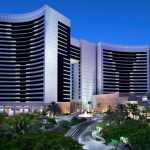Welcome to AVAR, whether you are a Member, thinking of becoming a Member, or just interested in finding out more about us. While other blogs here focus on technical topics, I will cover AVAR’s history, organisation and culture. This is information that usually spreads informally when we meet at conferences but, because of COVID-19, our 2020 conference was virtual and our 2021 conference will be too. Virtual conferences tend to have fewer opportunities for informal interaction; perhaps this is an opportunity to put this in writing, where it can be more accessible.
AVAR is an organisation with a mission:
To prevent the spread and damage caused by malicious software in Asia.
To improve members’ knowledge and skill through information exchanged among malicious software experts in Asia.
First and foremost, AVAR is its Members, brought together by this common mission. If you subscribe to the mission, you can apply to join. Members can be individuals or organisations, whether those are commercial, governmental or others. AVAR is not just for those who research malicious software; it is also relevant to the business and technical needs of corporate IT professionals, students, educators, law enforcement, legislators and all those whose objectives are to ensure safe and secure computing and the security of the internet.
You don’t have to be Asian, or live in Asia, to join, but there is a focus on events in Asia or Asian time zones. This relates to how and why AVAR was founded. AVAR was the brainchild of Mr. Seji Murakami, who was well-known in Japan for his anti-virus software company. In 1997 he travelled to San Francisco for the Virus Bulletin Conference, which is where I met him. Seiji pointed out that Europe and America had anti-virus conferences where researchers could meet, but researchers in Asia were somewhat isolated. We kept in touch after the conference and, with a few other researchers, we organised the first AVAR conference in 1998.
AVAR is controlled by its Members; an Annual General Meeting (AGM) is held each year after the end of the conference. The presentations of cities for future conferences, and the vote on the city has traditionally been the highlight of the AGM. The AGM elects a Board of Directors every two years. The CEO is responsible for running the organisation and reports to the Board.
English is the most common second language in the region, so AVAR primarily uses English. Depending on the host city, the conferences usually have translation between the local language and English. As a small organisation, we do not have the resources for full simultaneous translation between all languages.
As an organisation, AVAR is evolving to meet the changing needs of the mission and our Members. Our full name reflects our origin at a time when computer viruses were the predominant threat; the abbreviation maintains continuity with that at a time when the threat is malicious software more generally, and cybersecurity is an almost daily topic in the news. The balance between virtual and in-person events now and in the future will depend on external factors and our Members’ needs. If you think we can do better in our mission, please let us know and get involved.
Author
ALLAN DYER
AVAR Chairman
Comments are closed.




